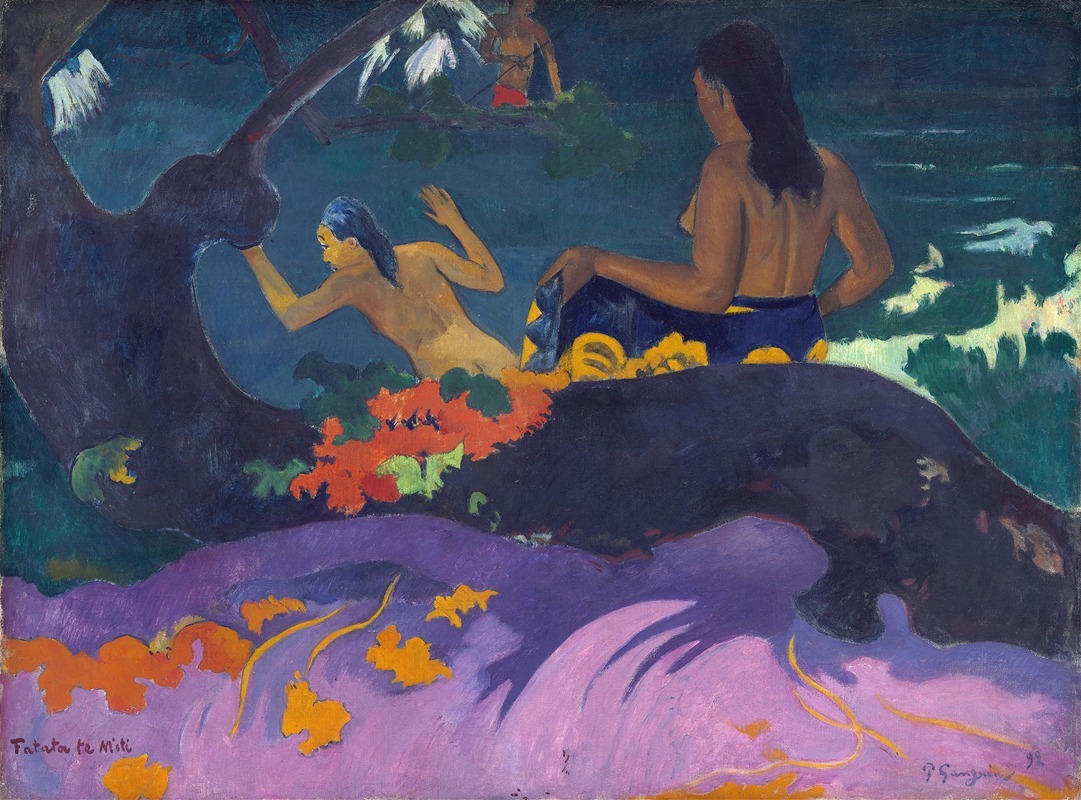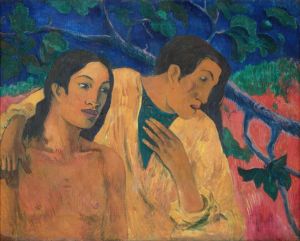
Fatata te Miti
A hand-painted replica of Paul Gauguin’s masterpiece Fatata te Miti, meticulously crafted by professional artists to capture the true essence of the original. Each piece is created with museum-quality canvas and rare mineral pigments, carefully painted by experienced artists with delicate brushstrokes and rich, layered colors to perfectly recreate the texture of the original artwork. Unlike machine-printed reproductions, this hand-painted version brings the painting to life, infused with the artist’s emotions and skill in every stroke. Whether for personal collection or home decoration, it instantly elevates the artistic atmosphere of any space.
Fatata te Miti is an oil painting created by French Post-Impressionist artist Paul Gauguin in 1892. The title, which translates from Tahitian as "By the Sea," reflects the artist's fascination with the culture and landscapes of French Polynesia, where he lived and worked during this period. The painting is part of Gauguin's broader exploration of Tahitian life, which he sought to depict as a simpler, more harmonious existence in contrast to the industrialized society of Europe.
The artwork portrays two Tahitian women near the water, with one figure preparing to dive into the sea while the other stands nearby. The composition is characterized by Gauguin's use of bold, flat colors and simplified forms, which were hallmarks of his mature style. The vibrant palette, including shades of blue, green, and orange, evokes the tropical environment and emphasizes the idyllic setting. Gauguin's approach to perspective and proportion in this painting is deliberately non-naturalistic, aligning with his interest in Symbolism and his desire to move away from traditional Western artistic conventions.
Gauguin created Fatata te Miti during his first extended stay in Tahiti, which lasted from 1891 to 1893. He had traveled to the island seeking inspiration and a break from European society, which he found increasingly stifling. In Tahiti, he immersed himself in the local culture and sought to capture what he perceived as its spiritual and natural purity. However, it is important to note that Gauguin's depictions of Tahitian life were often romanticized and filtered through his own artistic and cultural lens.
The painting is now housed in the National Gallery of Art in Washington, D.C., where it is part of the museum's permanent collection. It is considered an important example of Gauguin's Tahitian period and his efforts to develop a distinctive artistic language that combined elements of European modernism with influences from non-Western cultures.
While Fatata te Miti is celebrated for its aesthetic qualities, Gauguin's work in Tahiti has also been the subject of critical reassessment in recent years. Scholars have examined the colonial context of his time in French Polynesia and the ways in which his art reflects both his fascination with and misunderstandings of the local culture. Despite these complexities, the painting remains a significant piece in the history of Post-Impressionist art and continues to be studied and appreciated for its innovative style and evocative imagery.


















